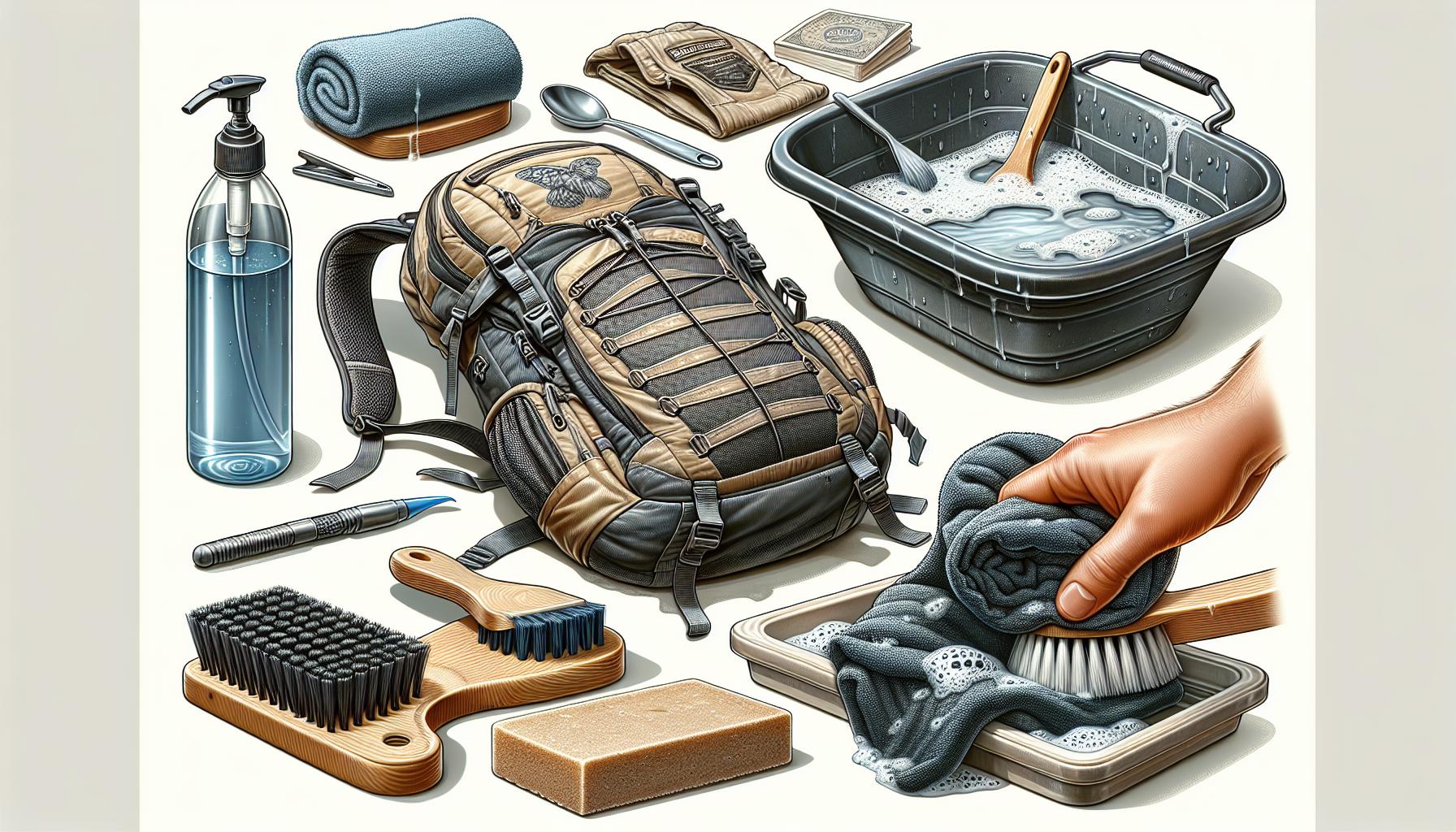
Embarking on a hiking adventure is always thrilling, but maintaining your hiking backpack can be a daunting task. Fear not, as we have compiled the ultimate guide to help you clean your hiking backpack effectively and efficiently.
Start by emptying the backpack and shaking out any debris. Spot clean any stains or spills with a mild detergent and a gentle brush. Apply the detergent directly to the stain, scrub gently, and rinse thoroughly. For a comprehensive cleaning, use a mixture of warm water and mild detergent to wipe down the entire backpack, inside and out. Rinse well and let it air dry in a well-ventilated area.
Remember to avoid machine washing or using harsh chemicals, as they can damage the backpack. Regular cleaning and maintenance will help keep your hiking backpack in good condition and ready for your next adventure.
Why Proper Backpack Maintenance Matters
Proper maintenance of your hiking backpack is essential to ensure its longevity and functionality. By following a regular cleaning routine, you can extend the lifespan of your backpack and prevent damage to your valuable gear.
Cleaning your backpack also plays a crucial role in reducing the risk of odors and bacteria buildup, which can be especially problematic after long hiking trips.
| Importance of Proper Backpack Maintenance |
|---|
|
How Often Should You Clean Your Backpack?
Cleaning your hiking backpack regularly is essential to maintain its durability and functionality. The frequency of cleaning will depend on various factors, such as usage, environment, and duration of trips. A well-used backpack that is exposed to dust, dirt, and sweat will require more frequent cleaning compared to one used infrequently in cleaner environments. Similarly, backpacks that are used for longer trips or in rugged terrains will accumulate more dirt and grime, necessitating more frequent cleaning. It is important to assess these factors and use your discretion to determine how often to clean your backpack. Regular cleaning will not only keep your backpack looking fresh but also help maintain its performance and prolong its lifespan. Remember to refer to the manufacturer's instructions for specific cleaning recommendations for your backpack, as different materials may require specific care.
Gathering The Necessary Cleaning Supplies
To clean a hiking backpack, gather the necessary cleaning supplies. You will need a mild detergent, a soft-bristle brush, a sponge or cloth, and water. Additionally, you can use baking soda, vinegar, or other natural cleaning agents for a deeper cleanse. Start by emptying the backpack and removing any loose dirt or debris. Mix a small amount of mild detergent with water, and use a sponge or cloth to wipe down the exterior of the backpack. Pay special attention to areas with visible stains or dirt. For tougher stains, use a soft-bristle brush to gently scrub the fabric. Rinse the backpack thoroughly with clean water, ensuring that all soap residue is removed. Finally, allow the backpack to air dry completely before storing or using it again.
Preparing Your Cleaning Area
To clean a hiking backpack, start by preparing your cleaning area. Choose a suitable location that can accommodate the size of your backpack. Lay out a tarp or towel to protect the surfaces from dirt and debris during the cleaning process. It's important to ensure access to a water source for rinsing the backpack thoroughly. Having a nearby hose or a sink nearby can be helpful.
Spot Cleaning Vs. Deep Cleaning
Spot cleaning and deep cleaning are two different methods used to clean a hiking backpack. Spot cleaning is suitable for small stains or spills, while deep cleaning is required for overall dirt and grime.
Spot cleaning involves targeting specific areas of the backpack that need attention. To spot clean, start by using a damp cloth or sponge with mild soap to gently scrub the stained area. Avoid using harsh chemicals that could damage the backpack material. Rinse the area thoroughly and allow it to air dry completely before using the backpack again.
Deep cleaning, on the other hand, involves cleaning the entire backpack to remove accumulated dirt and odors. Before deep cleaning, empty the backpack and remove any detachable parts. Fill a sink or a large tub with warm water and mild detergent. Submerge the backpack and use a soft brush to scrub gently. Pay attention to zippers and straps. Rinse thoroughly to remove any soap residue, and hang the backpack to air dry in a well-ventilated area. Avoid using a dryer.
Knowing when to use spot cleaning or deep cleaning depends on the condition of your backpack. Spot cleaning is suitable for quick touch-ups, while deep cleaning should be done periodically or when the backpack is heavily soiled. Keep in mind that proper maintenance is essential to extend the lifespan of your hiking backpack and ensure its cleanliness on every adventure.
Removing Small Stains And Spots
When it comes to cleaning a hiking backpack, it's important to tackle small stains and spots before they become bigger issues. Start by wiping off any dirt and debris with a clean cloth or brush. For tougher stains, mix a mild detergent with water and use a soft sponge or brush to gently scrub the affected areas.
Make sure to rinse the backpack thoroughly to remove any soap residue. If the stains persist, repeat the process or try using a specialized stain remover. Hang the backpack to dry in a well-ventilated area, avoiding direct sunlight. Remember to check the manufacturer's instructions for any specific cleaning guidelines for your backpack. By regularly cleaning and maintaining your hiking backpack, https://outdoorclutch.com/how-to-clean-a-hiking-backpack/?feed_id=260&_unique_id=656effb777405
Comments
Post a Comment